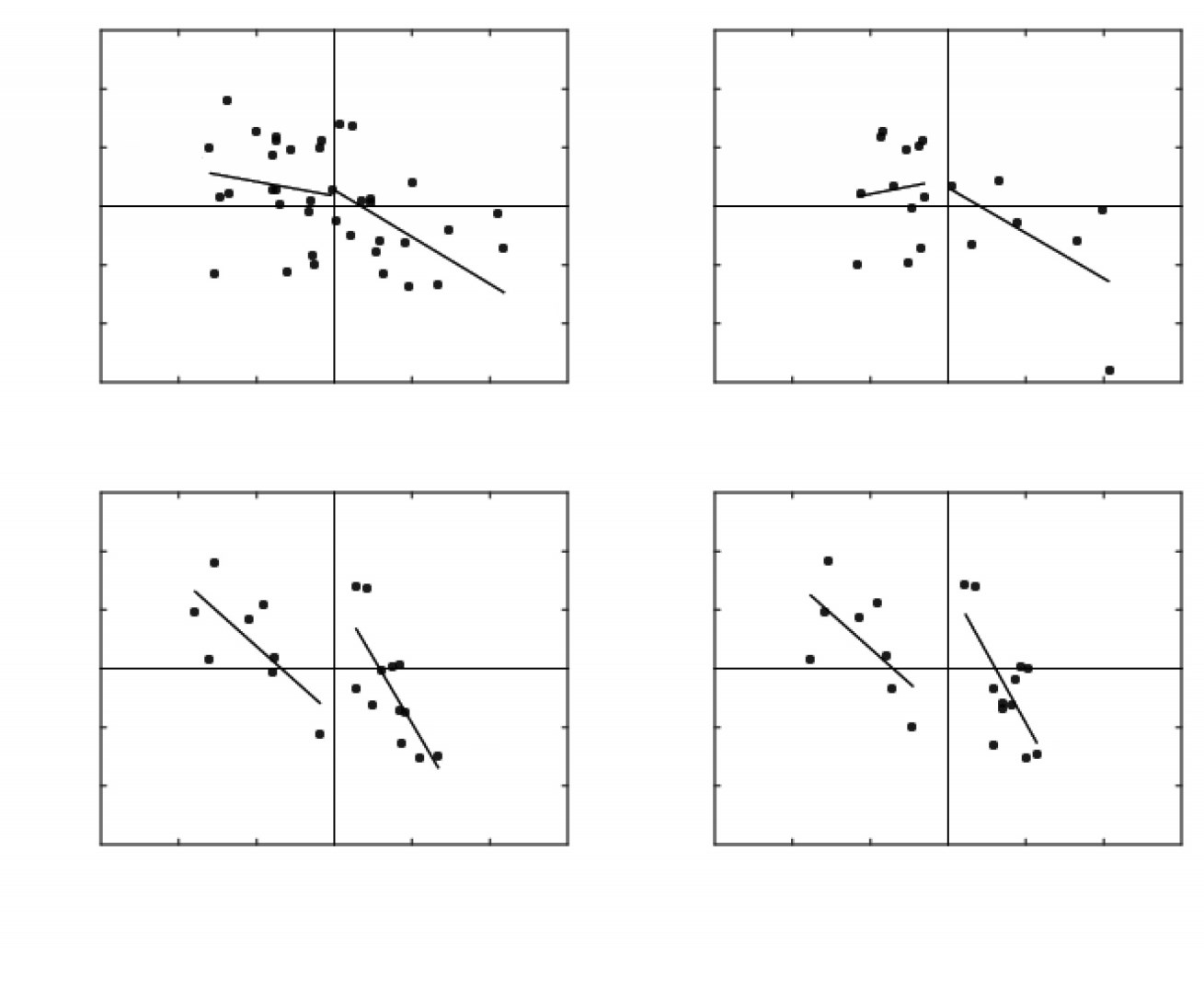ASYMMETRIC EFFECTS OF ENSO ON PRECIPITATION IN THE WESTERN NORTH PACIFIC DURING THE FOLLOWING SUMMER
-
摘要: 通过对1979—2018年Niño3.4指数和第二年夏季西北太平洋(Northwest Pacific, WNP)降水异常的分析发现,厄尔尼诺强度与第二年夏季WNP降水异常存在显著的负相关关系,而与拉尼娜并没有显著的相关关系。将厄尔尼诺和拉尼娜分为东部型和中部型以后发现,东部型厄尔尼诺和拉尼娜对次年夏季WNP降水的影响不对称,东部型厄尔尼诺强度与次年夏季WNP降水异常为负相关关系,而东部型拉尼娜与次年夏季WNP降水异常关系并不显著。相反,中部型厄尔尼诺和拉尼娜对WNP次年夏季降水的影响较为对称。不管是厄尔尼诺还是拉尼娜,其强度与次年夏季WNP降水异常相关性均非常显著。分析速度势和流函数场以及它们所对应的海表面温度场发现,强东部型厄尔尼诺、强中部型厄尔尼诺、强/弱东部型拉尼娜和强中部型拉尼娜事件中WNP降水主要受风场的辐合辐散控制,其降水异常区与辐合辐散中心对应得很好。而弱东部型厄尔尼诺和弱中部型厄尔尼诺事件中的WNP降水主要与中太平洋海温Gill型对称加热有关,在辐合中心西边产生一对气旋,导致了西北太平洋降水的正异常。而对于弱中部型拉尼娜,由于副热带中太平洋加热的作用,在西北太平洋区东部产生一个反气旋,导致了该区域的降水负异常。从而导致了强中部型拉尼娜年WNP区的降水显著大于弱中部型拉尼娜年WNP区的降水。可以看出,虽然中部型厄尔尼诺和中部型拉尼娜年降水异常在数值上是对称的,并且有显著的线性关系,但是他们对降水的影响机制是不同的。Abstract: Based on the analysis of Niño3.4 index from 1979 to 2018 and the precipitation anomaly of the next summer in the Western North Pacific(WNP), it is found that there was a significant negative correlation between the intensity of El Niño and the WNP precipitation anomaly in the following summer, while there was no significant correlation between La Niña and WNP precipitation anomaly in the following summer. After dividing El Niño and La Niña into EP type and CP type, it is found that the influence of EP El Niño and La Niña on the WNP summer precipitation is asymmetrical, and there is a negative correlation between the intensity of EP El Niño and the following summer WNP precipitation anomaly, while the correlation between EP La Niña and the following summer WNP precipitation anomaly is not significant. The effects of CP El Niño and La Niña on the following summer precipitation of WNP are symmetrical. The intensity of both CP El Niño and La Niña was significantly correlated with the WNP precipitation anomaly in the following summer. The analysis of velocity potential and stream function field shows that the precipitation of strong EP El Niño, strong CP El Niño, strong EP La Niña, weak EP La Niña and strong CP La Niña is mainly controlled by the convergence and divergence of wind field, and the precipitation anomaly area corresponds well to the convergence and divergence center. The weak EP El Niño and the weak CP El Niño are mainly influenced by the Gill' s symmetrical heating of the central Pacific Ocean, and a pair of cyclones are generated in the west of the convergence center, which leads to the positive anomaly of precipitation in the northwest Pacific Ocean. The weak CP La Niña, influenced by the heating of the subtropical central Pacific Ocean, generated an anticyclone in the eastern part of the WNP, which resulted in the negative precipitation anomaly in this region. As a result, the precipitation of strong CP La Niña in the WNP region is significantly greater than that of weak CP La Niña in the WNP region. From this, we can see that although the CP El Niño and CP La Niña precipitation are symmetrical in value, and there is a significant linear relationship, the mechanisms of their influence on precipitation are different.
-
Key words:
- ENSO /
- Western North Pacific /
- precipitation /
- asymmetry
-
图 4 同图 3,但为中部型强弱厄尔尼诺和拉尼娜次年夏季降水异常合成图与差值场
图 6 同图 5,但为中部型强弱厄尔尼诺和拉尼娜次年夏季850 hPa速度势场和降水异常场
图 8 同图 7,但为中部型各强弱厄尔尼诺和拉尼娜的冬季到次年夏季的海表面温度合成图
图 10 同图 9,但为中部型强弱厄尔尼诺和拉尼娜次年夏季850 hPa速度势场和SST场
图 12 同图 11,但为中部型强弱厄尔尼诺和拉尼娜次年夏季850 hPa流函数场和SST场
表 1 1979—2018年东部型和中部型厄尔尼诺和拉尼娜年份
类型 东部型 中部型 厄尔尼诺 1981、1982、1986、1991、1997、2006 1979、1987、1989、1990、1992、1993 2015 1994、2002、2003、2004、2009、2014 拉尼娜 1980、1984、1985、1995、1996、1999 1983、1988、1998、2000、2008、2010、 2001、2005、2007、2012、2013、2017 2011、2016 表 2 各类型ENSO强弱年份
类型 强 弱 东部厄尔尼诺 1982、1997、2015 1981、1986、1991、2006 东部拉尼娜 1984、1999、2005、2007、2017 1980、1985、1995、1996、2001、2012、2013 中部厄尔尼诺 1987、1990、1994、2002、2004、2009、2014 1979、1989、1992、1993、2003 中部拉尼娜 1988、1998、2010、2011 1983、2000、2008、2016 -
[1] WEARE B C, NAVATO A R, NEWELL R E. Empirical orthogonal analysis of pacific sea surface temperatures[J]. J Phys Oceanogr, 1976, 6(5): 671-678. https://doi.org/10.1175/1520-0485(1976)006<0671:EOAOPS>2.0.CO;2. [2] FU C, DIAZ H F, FLETCHER J O. Characteristics of the Response of Sea Surface Temperature in the Central Pacific Associated with Warm Episodes of the Southern Oscillation[J]. Mon Wea Rev, 2000, 114(9): 14-15.https://doi.org/10.1175/1520-0493(1986)1142.0.CO;2. [3] YU J Y, KAO H Y. Decadal changes of ENSO persistence barrier in SST and ocean heat content indices: 1958-2001[J]. Journal of Geophysical Research: Atmospheres, 2007, 112(D13). https://doi.org/10.1029/2006JD007654. [4] YU J Y, KAO H Y. Contrasting Eastern-Pacific and Central-Pacific Types of ENSO[J]. J Climate, 2009, 22(3): 615-632. https://doi. org /10.1175/2008JCLI2309.1. [5] KUG J S, JIN F F, AN S I. Two Types of El Niño Events: Cold Tongue El Niño and Warm Pool El Niño [J]. J Climate, 2009, 22(6): 1499-1515. https://doi.org/10.1175/2008JCLI2624.1. [6] ASHOK K, BEHERA S K, RAO S A, et al. El Niño Modoki and its possible teleconnection[J]. J Geophysi Res: Oceans, 2007, 112(C11).https://doi.org/10.1029/2006JC003798Citations: 1,894. [7] LARKIN N K, HARRISON D E. On the definition of El Niño and associated seasonal average U.S. weather anomalies[J]. Geophysi Res Lett, 2005, 32(13): L13705. https://doi.org/10.1029/2005GL022738. [8] LEE T, MCPHADEN M J. Increasing intensity of El Niño in the central-equatorial Pacific[J]. Geophys Res Lett, 2010, 37(14): L14603. https://doi.org/10.1029/2010GL044007. [9] YU J Y, KAO H Y, LEE T. Subtropics-related interannual sea surface temperature variability in the central equatorial Pacific[J]. J Climate, 2010, 23(11): 2 869-2 884.https://doi.org/10.1175/2010JCLI3171.1. [10] YU J, ZOU Y, KIM S T, et al. The changing impact of El Niño on US winter temperatures[J]. Geophys Res Lett, 2012, 39(15): L15702.https://doi.org/10.1029/2012GL052483. [11] MARATHE S, ASHOK K, SWAPNA P, et al. Revisiting El Niño Modokis[J]. Climate Dyn, 2015, 45: 3 527-3 545. https://doi.org/10.1007/s00382-015-2555-8. [12] KAO H Y, YU J Y. Contrasting eastern-Pacific and central-Pacific types of ENSO[J]. J Climate, 2009, 22(3): 615-632. https://doi. org /10.1175/2008JCLI2309.1. [13] YU J Y, KAO H Y, LEE T. Subtropics-related interannual sea surface temperature variability in the central equatorial Pacific[J]. J Climate, 2010, 23(11): 2 869-2 884. https://doi.org/10.1175/2010JCLI3171.1. [14] YANG S, JIANG X. Prediction of eastern and central Pacific ENSO events and their impacts on East Asian climate by the NCEP climate forecast system[J]. J Climate, 2014, 27(12): 4451-4472. https://doi.org/10.1175/JCLI-D-13-00471.1. [15] ZHANG R H, TAO L J, GAO C. An improved simulation of the 2015 El Niño event by optimally correcting the initial conditions and model parameters in an intermediate coupled model[J]. Climate Dyn, 2018, 51:269-282. https://doi.org/10.1007/s00382-017-3919-z. [16] NITTA T. Convective activities in the tropical western Pacific and their impact on the northern hemisphere summer circulation[J]. J Meteor Soc of Japan, 1987, 65(3): 373-390. https://doi.org/10.2151/jmsj1965.65.3_373. [17] HUANG R, SUN F. Impacts of the tropical western Pacific on the East Asian summer monsoon[J]. J Meteor Soc Japan, 1992, 70(1B): 243-256. https://doi.org/10.2151/jmsj1965.70.1B_243. [18] LEE S S, LEE J Y, HA K J, et al. Deficiencies and possibilities for long-lead coupled climate prediction of the Western North Pacific-East Asian summer monsoon[J]. Climate Dyn, 2011, 36: 1 173-1 188. https://doi.org/10.1007/s00382-010-0832-0. [19] ZHANG, R. H., A. Sumi, M. Kimoto, Impact of El Niño on the East Asian monsoon: A diagnostic study of the ' 86/87 and ' 91/92 events[J].J Meteor Soc Japan Ser Ⅱ, 1996(74) : 49-62. https://doi.org/10.2151/jmsj1965.74.1_49. [20] Wang B, WU R G, FU X H. Pacific-East Asian teleconnection: How does ENSO affect East Asian climate?[J]. J Climate, 2000, 13(9): 1 517-1 536. https://doi.org/10.1175/1520-0442(2000)013 <1517:PEATHD >2.0.CO;2. [21] WU R, HU Z Z, KIRTMAN B P. Evolution of ENSO related rainfall anomalies in East Asia[J]. J Climate, 2003, 16(22): 3742-3758. https://doi.org/10.1175/1520-0442(2003)016<3742:EOERAI>2.0.CO;2. [22] WU B, ZHOU T, LI T. Contrast of rainfall-SST relationships in the western North Pacific between the ENSO-developing and ENSOdecaying summers[J]. J Climate, 2009, 22(16): 4398-4405. https://doi.org/10.1175/2009JCLI2648.1. [23] CHEN W, PARK J K, DONG B, et al. The relationship between El Niño and the western North Pacific summer climate in a coupled GCM: Role of the transition of El Niño decaying phases[J]. J Geophy Res Atmos, 2012, 117:D12111. https://doi.org/10.1029/2011JD017385. [24] LU R, LU S. Local and remote factors affecting the SST-precipitation relationship over the Western North Pacific during summer[J]. J Climate, 2014, 27(13): 5 132-5 147. https://doi.org/10.1175/JCLI-D-13-00510.1. [25] XUE F, LIU C Z. The influence of moderate ENSO on summer rainfall in eastern China and its comparison with strong ENSO[J]. Chinese Science Bulletin, 2008, 53(5): 791-800. https://doi.org/10.1007/s11434-008-0002-5. [26] 李智玉, 张文君, 徐海明. 两类ENSO事件非对称性特征分析[J]. 气象学报, 2015, 73(6): 1 019-1 038. https://doi. org / 10.11676 / qxxb2015.079. [27] KARORI M A, LI J, JIN F F. The Asymmetric Influence of the Two Types of El Niño and La Niña on summer rainfall over Southeast China [J]. J Climate, 2013, 26(13): 4 567-4 582. https://doi.org/10.1175/JCLI-D-12-00324.1. [28] 李天然, 张人禾, 温敏. ENSO对中国冬半年降水影响的不对称性及机制分析[J]. 热带气象学报, 2017, 33(1): 1-10. https://doi.org/ 10.16032/j.issn.1004-4965.2017.01.001. [29] 徐霈强, 冯娟, 陈文. ENSO冷暖位相影响东亚冬季风与东亚夏季风联系的非对称性[J].大气科学, 2016, 40(4): 831-840. https://doi.org/10.3878/j.issn.1006-9895.1509.15192. [30] FENG J, CHEN W, LI Y J. Asymmetry of the winter extra-tropical teleconnections in the Northern Hemisphere associated with two types of ENSO [J]. Climate Dyn, 2017, 48: 2 135-2 151. https://doi.org/10.1007/s00382-016-3196-2. [31] ZHANG Z, REN B, ZHENG J. A unified complex index to characterize two types of ENSO simultaneously[J]. Scientific Reports, 2019, 9:8 373. https://doi.org/10.1038/s41598-019-44617-1. [32] WANG B, WU R, FU X. Pacific-East Asian teleconnection: How does ENSO affect East Asian climate[J]. J Climate, 2000, 13(9): 1 517-1 536. https://doi.org/10.1175/1520-0442(2000)013<1517:PEATHD>2.0.CO;2. [33] TRENBERTH K E, SHEA D J, Relationships between precipitation and surface temperature[J]. Geophys Res Lett, 2005, 32(14): L14703.https://doi.org/10.1029/2005GL022760. [34] WANG B, DING Q, FU X, et al. Fundamental challenge in simulation and prediction of summer monsoon rainfall[J]. Geophys Res Lett, 2005, 32(15): L15711. https://doi.org/10.1029/2005GL022734. [35] WU R, KIRTMAN B P, PEGION K. Local air-sea relationship in observations and model simulations[J]. J Climate, 2006, 19(19): 4 914-4 932. https://doi.org/10.1175/JCLI3904.1. [36] GILL A E. Some simple solutions for heat-induced tropical circulation[J]. Quart J Roy Meteor Soc, 1980, 106(449): 447-462, https://doi.org/10.1002/qj.49710644905. [37] CHEN P, HOERLING M P, DOLE R M. The origin of the subtropical anticyclones[J]. J Atmos Sci, 2001, 58(13): 1 827-1 835. https://doi.org/10.1175/1520-0469(2001)058<1827:TOOTSA>2.0.CO;2. -






 下载:
下载:













 粤公网安备 4401069904700003号
粤公网安备 4401069904700003号